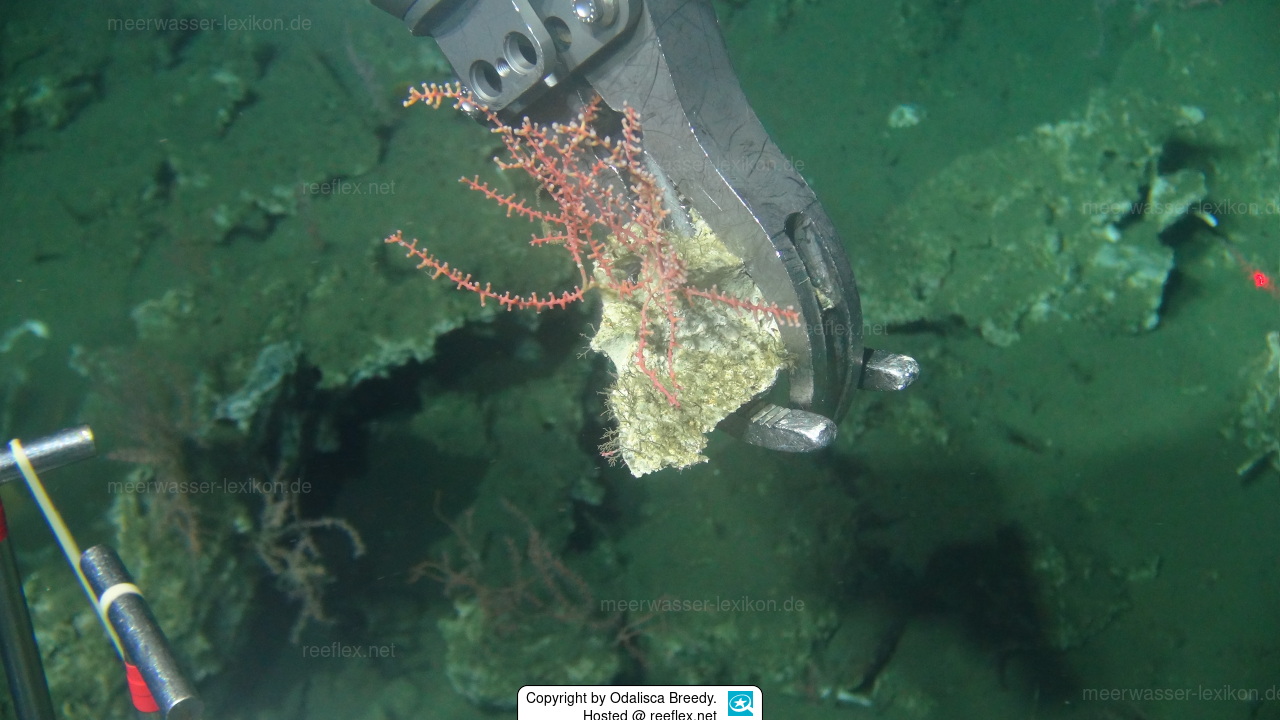Info
The color of the deep water gorgonian is red, the sclerites are red, orange and of lighter color.
Due to its deep distribution, the coral could only be discovered and collected with the help of an HOV, see photos.
Swiftia sahlingi lives in dense aggregations on shallow authigenic carbonate rocks.
Many of the colonies observed and collected were near active methane seeps, and one colony was even found on a tube of the polychaete Lamellibrachia (Siboglinidae).
Near the collection site were groups of bivalves (Bathymodiolus spp.), bacterial mats, and branching foraminifera.
Etymology. The species is named after Heiko Sahling, an eminent marine geologist who discovered and named Mound 12, Middle American margin, near Costa Rica, the type locality of the new species.
Due to its deep distribution, the coral could only be discovered and collected with the help of an HOV, see photos.
Swiftia sahlingi lives in dense aggregations on shallow authigenic carbonate rocks.
Many of the colonies observed and collected were near active methane seeps, and one colony was even found on a tube of the polychaete Lamellibrachia (Siboglinidae).
Near the collection site were groups of bivalves (Bathymodiolus spp.), bacterial mats, and branching foraminifera.
Etymology. The species is named after Heiko Sahling, an eminent marine geologist who discovered and named Mound 12, Middle American margin, near Costa Rica, the type locality of the new species.







 Dr. Odalisca Breedy, Panama
Dr. Odalisca Breedy, Panama







